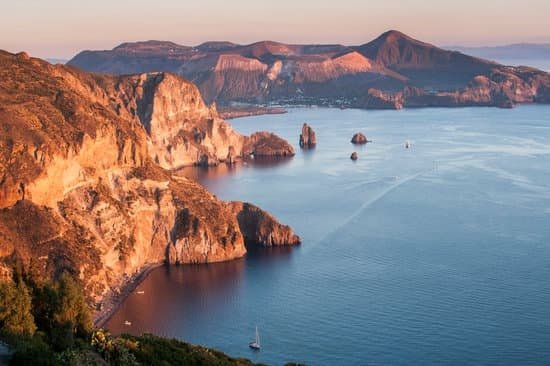Italy is renowned for its stunning landscapes, rich history, delectable cuisine, and vibrant culture, making it a top travel destination for people from around the world. Whether you’re drawn to the ancient ruins of Rome, the picturesque canals of Venice, or the rolling vineyards of Tuscany, Italy offers a diverse array of experiences for every type of traveler.
But what is the best time to travel to Italy? Understanding the country’s weather patterns and seasonal trends can help you plan your trip and make the most of your visit.
Each season in Italy comes with its own unique charm and attractions. From sunny beaches in summer to snowy mountains in winter, there is something for everyone throughout the year. High season, typically during the summer months, brings warm weather and bustling tourist hotspots but also crowds and higher prices. On the other hand, visiting during the low season can mean fewer tourists, cooler temperatures, and lower costs, providing a more relaxed experience.
For those looking to strike a balance between crowds and savings, the shoulder seasons are ideal. Spring and fall offer mild weather, blooming landscapes, cultural events, and fewer tourists compared to peak times. Whether you want to immerse yourself in Italy’s vibrant festivals or explore its historical sites without long lines, choosing the right timing for your visit can greatly enhance your travel experience in this beloved European destination.
Weather in Italy
Italy’s weather plays a significant role in determining the best time to visit this beautiful country. The different seasons offer unique experiences for travelers, each with its own advantages and considerations. Here is a breakdown of the weather throughout the year in Italy:
- Spring (March – May): Spring in Italy is a delightful time to visit, with blooming flowers, mild temperatures, and fewer tourists compared to the summer months. This season is perfect for exploring picturesque gardens, vineyards, and charming towns without the crowds.
- Summer (June – August): The summer months bring warm weather and vibrant energy to Italy. This is the peak tourist season, with popular destinations like Rome, Florence, and Venice bustling with visitors. Travelers can enjoy long sunny days, outdoor activities, and al fresco dining during this time.
- Fall (September – November): Fall in Italy is a great time to experience harvest festivals, wine tastings, and pleasant weather. The summer crowds start to dissipate, making it easier to explore iconic landmarks without long lines. The fall foliage adds a touch of magic to the countryside.
- Winter (December – February): Winter in Italy offers a different charm, with fewer tourists, Christmas markets, and the opportunity to ski in the Alps. Cities like Milan and Turin come alive during this season with holiday decorations and festive atmosphere.
When considering what is the best time to travel to Italy based on weather preferences and activities desired during your trip, it is essential to take into account these seasonal variations for a memorable experience.
Whether you prefer basking under the Mediterranean sun in summer or exploring historic sites without the crowds in fall or spring, Italy has something to offer year-round. Each season brings its own unique charm and opportunities for travelers seeking different experiences. Ultimately, choosing the best time to visit Italy depends on your personal interests and what you hope to gain from your Italian adventure.
High Season
When considering the best time to travel to Italy, it is essential to weigh the pros and cons of visiting during peak tourist times. The high season in Italy typically falls during the summer months, from June to August. During this time, you can expect warm weather, longer days, and a lively atmosphere in popular tourist destinations such as Rome, Florence, and Venice. However, with these benefits come some drawbacks that travelers should be aware of.
Pros of traveling to Italy during the high season:
- Optimal weather conditions for outdoor activities and sightseeing
- An abundance of cultural events, festivals, and open-air concerts
- Extended opening hours for attractions and restaurants
Cons of traveling to Italy during the high season:
- Crowded tourist attractions with long lines and wait times
- Higher prices for accommodations, tours, and transportation
- Tourist trap experiences in heavily visited areas
Despite the challenges of visiting Italy during the high season, many travelers enjoy the vibrant ambiance and plethora of activities that come with peak tourist times. However, for those looking to avoid crowds and save money on their trip, exploring Italy during the low season or shoulder seasons may be a more appealing option. Ultimately, what is considered the best time to travel to Italy depends on individual preferences and priorities.
Low Season
Italy’s off-peak months, typically from November to March, offer a unique opportunity for travelers to experience the country in a different light. The reduced crowds during this time allow visitors to explore popular attractions without the hassle of long lines or overcrowded spaces. Additionally, accommodations and airfare are often more affordable during the low season, making it an ideal time for budget-conscious travelers.
One of the major benefits of traveling to Italy during the off-peak months is the opportunity to immerse oneself in local culture without competing with hordes of tourists. This allows for a more authentic experience as visitors can interact with locals and get a better sense of everyday life in Italy.
Whether you’re exploring the charming streets of small villages or savoring traditional cuisine at local eateries, the low season provides a quieter and more intimate setting for your Italian adventure.
While the weather may be cooler during the off-peak months, particularly in Northern Italy, there are still plenty of indoor activities to enjoy. From visiting world-class museums and art galleries to indulging in wine tastings and cooking classes, there is no shortage of cultural experiences to be had in Italy year-round. For travelers looking to avoid the crowds and experience Italy at a slower pace, the low season can be an excellent choice.
| Benefit | Description |
|---|---|
| Reduced Crowds | Less crowded attractions and more affordable accommodations. |
| Immersive Experience | Better opportunity to interact with locals and explore everyday life. |
| Indoor Activities | Museums, art galleries, wine tastings offer enjoyable experiences even during cooler weather. |
Shoulder Seasons
Italy’s shoulder seasons, which fall between the high and low tourist seasons, offer a unique opportunity to experience the country in a different light. During these transitional months, such as late spring (April to June) and early autumn (September to October), travelers can enjoy milder weather, fewer crowds, and lower prices compared to peak season.
The landscapes are lush and colorful during these times, making it ideal for outdoor activities like hiking in the countryside or exploring historic sites without feeling overwhelmed by tourists.
One of the advantages of visiting Italy during the shoulder seasons is the ability to interact more closely with locals. With fewer tourists around, you have a better chance of immersing yourself in the authentic culture of the region you are visiting.
Whether it’s striking up a conversation at a local cafe or participating in traditional festivals and events, you’ll have a more intimate and genuine experience that may not be possible during busier times of the year. Additionally, accommodations and restaurants are more likely to offer personalized service and attention to detail when they are not operating at full capacity.
For travelers who want to strike a balance between good weather, affordability, and cultural experiences, the shoulder seasons present an excellent opportunity to explore Italy at its best. Whether you’re interested in wandering through vineyards in Tuscany, savoring freshly caught seafood on the Amalfi Coast, or admiring art masterpieces in Florence without feeling rushed, choosing to visit during these transitional months can provide a well-rounded and unforgettable experience.
| Advantages of Shoulder Seasons | Benefits |
|---|---|
| Milder weather | Enjoyable outdoor activities |
| Fewer crowds | Increased interaction with locals |
| Lush landscapes | Personalized service from accommodations |
Festivals and Events
Italy is not only known for its picturesque landscapes, rich history, and delectable cuisine but also for its vibrant festivals and events that showcase the country’s cultural heritage. From religious celebrations to food festivals, there is something happening in Italy year-round that appeals to travelers of all interests. So, what is the best time to travel to Italy if you want to immerse yourself in these cultural experiences?
Spring Festivals
One of the most beloved spring festivals in Italy is Carnevale, particularly in Venice where masked balls and elaborate parades take center stage. This event usually falls in February or March depending on the lunar calendar. Another highlight is Easter weekend, when cities like Rome and Florence come alive with religious processions and traditional rituals. Travelers looking to experience these unique cultural traditions should consider visiting Italy during these months.
Summer Events
As summer rolls around, so do a myriad of music festivals across the country. From the famed opera performances at Verona’s Arena di Verona to outdoor concerts along the Amalfi Coast, there are plenty of opportunities to enjoy music under the Italian sun. Additionally, summer brings food festivals celebrating everything from truffles in Alba to seafood in Sicily. If you’re a foodie or music lover, then summer might be the best time for you to visit Italy.
Autumn Harvest Festivals
Autumn in Italy is synonymous with harvest season, making it a great time to experience wine and olive oil festivals throughout Tuscany and Umbria. Truffle fairs also abound during this time of year, offering visitors a chance to taste this prized delicacy.
The autumn colors provide a stunning backdrop for these festivities, making it an ideal time for nature lovers as well. For those interested in culinary delights and experiencing Italy’s countryside culture, autumn may be the perfect season to plan your trip.
With such a diverse range of festivals and events happening throughout the year, deciding on the best time to travel to Italy can be a tough decision. Ultimately, it depends on your personal interests and what kind of cultural experiences you are looking for during your visit. Whether you prefer spring’s festive atmosphere, summer’s musical extravaganza, or autumn’s harvest celebrations, Italy offers something special for every traveler at any time of year.
Budget Travel Tips
When it comes to traveling to Italy on a budget, there are several tips to keep in mind that can help you save money while still enjoying all that this beautiful country has to offer. From finding affordable accommodations to saving on transportation costs, here are some budget travel tips for visiting Italy at different times of the year.
Avoid High Season Prices
One of the best ways to save money when traveling to Italy is to avoid visiting during the high season. Peak tourist times, such as summer months from June to August, can drive up prices for accommodations, attractions, and even dining options. If you’re looking to save money, consider planning your trip during the shoulder seasons or low season when prices tend to be lower and crowds are thinner.
Book Accommodations in Advance
Regardless of when you choose to travel to Italy, booking your accommodations in advance can help you secure better deals and avoid last-minute price hikes. Look for budget-friendly options such as hostels, guesthouses, or vacation rentals rather than luxury hotels. Websites like Airbnb, Booking.com, or Hostelworld can help you find affordable places to stay no matter what time of year you decide to visit.
Use Public Transportation
When exploring cities like Rome, Florence, or Venice, opt for public transportation instead of expensive taxi rides or rental cars. Most major Italian cities have efficient and affordable public transportation systems that can take you anywhere you need to go. Additionally, consider purchasing multi-day transport passes if you plan on using buses or trains frequently during your stay. This can help you save money on transportation costs while getting around easily.
By following these budget travel tips and considering the best time to travel to Italy based on your preferences and interests, you can enjoy a memorable experience without breaking the bank. Whether you choose to visit during the low season for fewer crowds and lower prices or explore cultural festivals during the shoulder seasons, there are plenty of ways to make your Italian getaway both enjoyable and cost-effective.
Recommendations
When it comes to determining the best time to travel to Italy, it ultimately depends on individual preferences and interests. For those who enjoy the hustle and bustle of peak tourist seasons, the summer months from June to August offer warm weather and vibrant festivities. However, it’s important to keep in mind that popular destinations may be crowded and prices can be higher during this time.
On the other hand, travelers looking to avoid the crowds and save some money might consider visiting Italy during the off-peak months of November to March. While the weather may be cooler, especially in northern regions, there are fewer tourists and accommodations tend to be more affordable. This is also a great time to experience Italy’s cultural attractions without the crowds.
For those seeking a balance between good weather and manageable crowds, the shoulder seasons of April-May and September-October are ideal. During these transitional months, you can still enjoy pleasant temperatures, outdoor activities, and cultural events while avoiding the peak tourist numbers.
Plus, you might even snag some discounts on accommodations and airfare. Ultimately, the best time to travel to Italy is subjective and depends on what you prioritize in your travel experience – whether it’s sightseeing in historic cities, lounging on scenic beaches, or indulging in authentic Italian cuisine.
Frequently Asked Questions
What Is the Best Month to Go to Italy?
The best month to go to Italy really depends on personal preference. However, many people consider May or September as ideal times to visit. These months offer pleasant weather, fewer crowds, and generally lower prices compared to the peak summer months.
What Is the Cheapest Time of Year to Go to Italy?
The cheapest time of year to go to Italy is typically during the winter months, particularly January and February. During this time, you can find great deals on flights, accommodations, and attractions due to lower tourist numbers. Additionally, visiting less popular cities or regions can also help save money.
What Month Is the Warmest in Italy?
The warmest month in Italy is usually July. This is when temperatures are at their highest throughout the country, with regions like Sicily and southern Italy experiencing scorching heat. If you enjoy hot weather and want to soak up the sun on Italy’s beautiful beaches, July might be the perfect time for you to visit.

I’m a passionate traveler, writer, and Italophile. My fascination with Italy’s history, art, and culture has led me on countless adventures across the Italian landscape. Through “I Live Italy,” I share my love for this extraordinary country and aims to inspire others to explore its boundless beauty.





